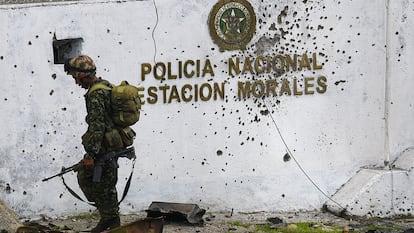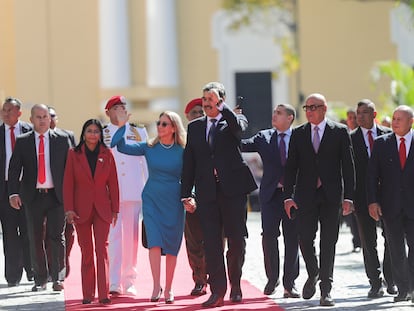Citizen security should be a central focus of the 2025 Summit of the Americas
The Summit in December presents an opportunity to create a comprehensive framework that bridges two often separate conversations: addressing the root causes of crime and strengthening the capacity of law enforcement and justice institutions

Last month representatives from across the Western Hemisphere convened in the Dominican Republic to mark the 30th anniversary of the Summit of the Americas, a milestone that invites reflection on the evolution of hemispheric cooperation over the past three decades.
The first summit took place at a time of collaboration, with countries working towards shared goals in an era of optimism and relative unity. Fast-forward to today, and the landscape is strikingly different. The hemisphere is increasingly divided, with countries struggling to find common ground amid rising polarization. As planning for the December 2025 Summit gets underway, leaders should develop an agenda based on themes that resonate across the Americas.
Addressing citizen insecurity — a pressing, transnational challenge that demands a coordinated, regional response — should be at the top of the agenda.
The statistics paint a grim picture. Latin America and the Caribbean have the highest regional homicide rates in the world, with over half of these deaths linked to organized crime. One in five citizens rank insecurity as their primary concern, with nearly a quarter reporting they were victims of a crime in the past year. The human cost is staggering, with young people, women, and marginalized communities bearing the brunt of the violence. Today, one in four women in the region has experienced gender-based violence, and there is a femicide every two hours. Crime is also a major concern in the United States, with a growing share of U.S. citizens — almost 60 percent — citing it as a top priority for the incoming Trump administration.
In addition to the devastating impact on quality of life, citizen insecurity has a corrosive effect on economic development, helps fuel the hemisphere-wide migration crisis, and contributes to the crisis of confidence in democracy.
Crime deters investment, disrupts tourism, and drains public resources. The Inter-American Development Bank reports that crime costs the countries of Latin America and the Caribbean 3.5 percent of their GDP. Along with natural disasters, crime victimization is a predictor of the desire to migrate from one’s home country. In Central America, for instance, those who have experienced a crime themselves or the victimization of someone close are 1.5 times more likely to consider migrating, and the dramatic increase in violence in Ecuador has been a factor in the surge of migration from the country.

Perhaps most concerning is how persistent insecurity undermines democratic governance. Only three in five believe democracy is the best form of government, and only two in five are satisfied with its performance—in part because governments have failed to deliver basic security. When people feel unsafe, they become more receptive to heavy-handed, militarized responses that erode democratic principles. This creates a dangerous cycle: weakened democratic institutions struggle to address security challenges, further diminishing public confidence.
The next Summit of the Americas presents an opportunity to create a comprehensive framework that bridges two often separate conversations: addressing the root causes of crime and strengthening the capacity of law enforcement and justice institutions. Achieving this requires collaboration from all sectors — governments, civil society, the private sector, and multilateral organizations.
On the enforcement side, regional cooperation through greater information-sharing, joint security initiatives, and coordinated law enforcement efforts can provide the scaffolding for a hemispheric security architecture. By working together, countries can better disrupt criminal networks, improve intelligence gathering, and reduce the illicit arms and drug flows that fuel violence.
Yet, enforcement alone cannot solve this crisis. Sustainable progress demands policies that tackle the socioeconomic factors driving crime, including poverty, inequality, limited education, and social exclusion. A balanced approach that combines professional policing with social programs, economic opportunities, and community-based intervention can yield lasting results. The Summit process can facilitate the exchange of these evidence-based practices while building political support for comprehensive solutions.
By advancing this dual framework of institutional cooperation and social investment, the Summit can help lay the groundwork for safer, more inclusive societies throughout the Americas. As importantly, bringing countries together to address this shared challenge can begin to rebuild the spirit of hemispheric cooperation that inspired the Summit process three decades ago. The security of our citizens — and the stability of our democratic institutions — depends on our ability to act together.
Tu suscripción se está usando en otro dispositivo
¿Quieres añadir otro usuario a tu suscripción?
Si continúas leyendo en este dispositivo, no se podrá leer en el otro.
FlechaTu suscripción se está usando en otro dispositivo y solo puedes acceder a EL PAÍS desde un dispositivo a la vez.
Si quieres compartir tu cuenta, cambia tu suscripción a la modalidad Premium, así podrás añadir otro usuario. Cada uno accederá con su propia cuenta de email, lo que os permitirá personalizar vuestra experiencia en EL PAÍS.
¿Tienes una suscripción de empresa? Accede aquí para contratar más cuentas.
En el caso de no saber quién está usando tu cuenta, te recomendamos cambiar tu contraseña aquí.
Si decides continuar compartiendo tu cuenta, este mensaje se mostrará en tu dispositivo y en el de la otra persona que está usando tu cuenta de forma indefinida, afectando a tu experiencia de lectura. Puedes consultar aquí los términos y condiciones de la suscripción digital.
More information
Archived In
Últimas noticias
‘Doctor Death’, the journalist who has witnessed 105 executions in Florida
Being trans or gay in a migrant detention center: ‘They call me faggot, queer, bitch’
The metaverse, four years later: Is it finished or just at a standstill?
$3,000 and a plane ticket: The United States increases incentives for migrants to self-deport before the end of the year
Most viewed
- The low-cost creative revolution: How technology is making art accessible to everyone
- Christian Louboutin: ‘Young people don’t want to be like their parents. And if their parents wear sneakers, they’re going to look for something else’
- All the effects of gentrification in one corner of Mexico’s Colonia Roma
- Liset Menéndez de la Prida, neuroscientist: ‘It’s not normal to constantly seek pleasure; it’s important to be bored, to be calm’
- Christmas loses its festive spirit: ICE fears cast shadow over religious celebrations










































